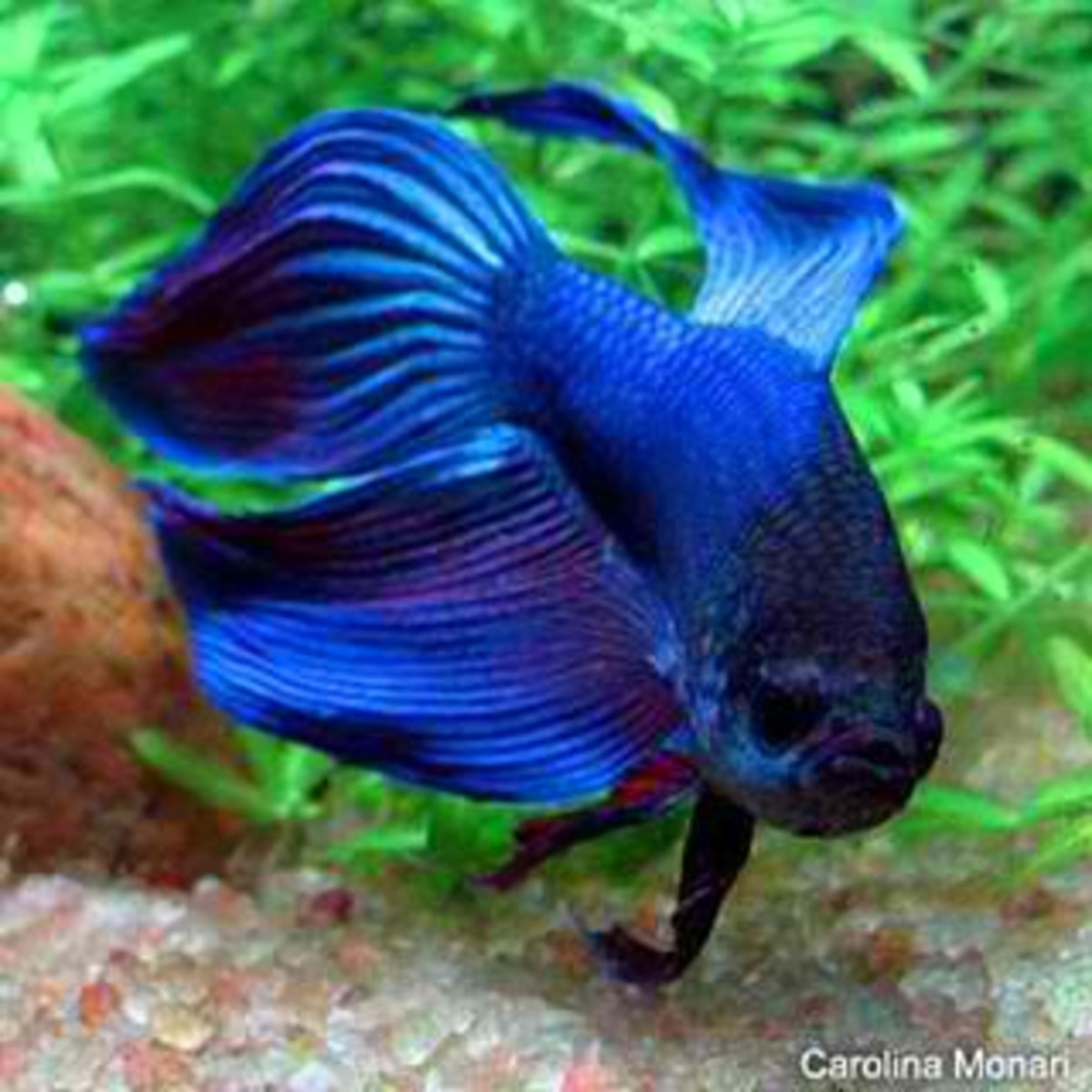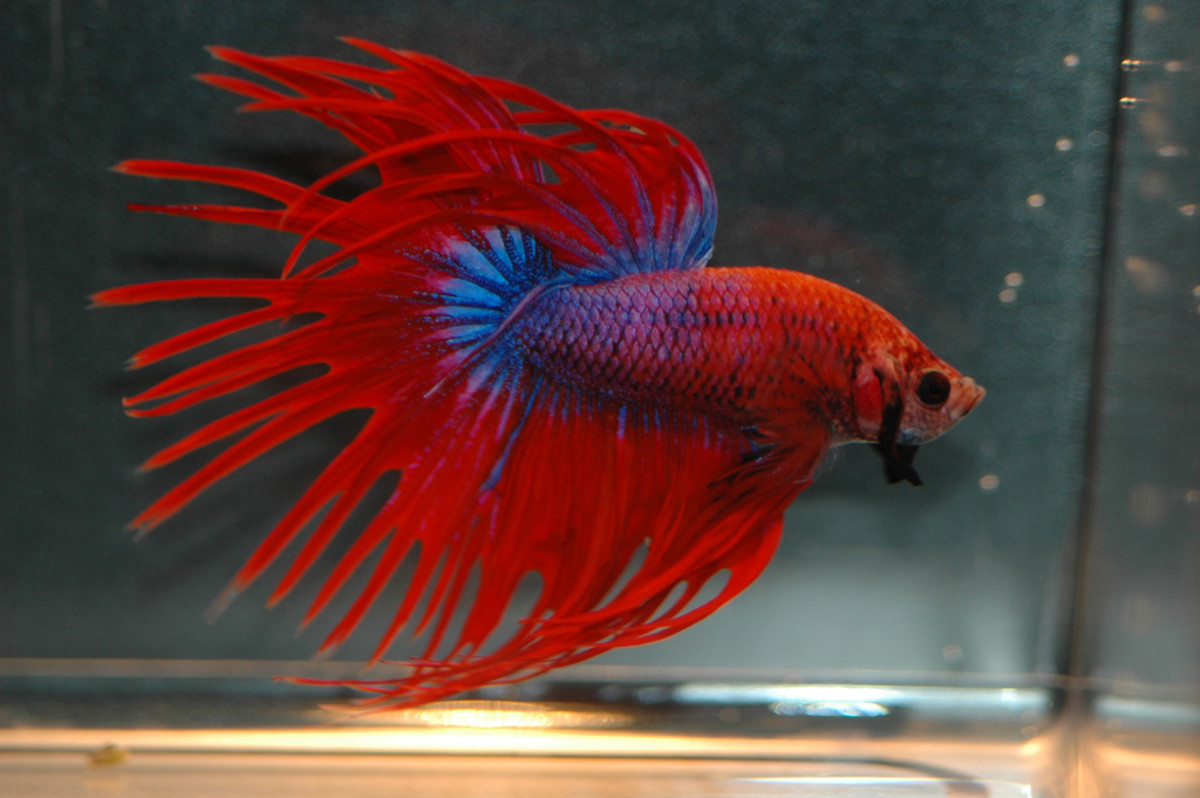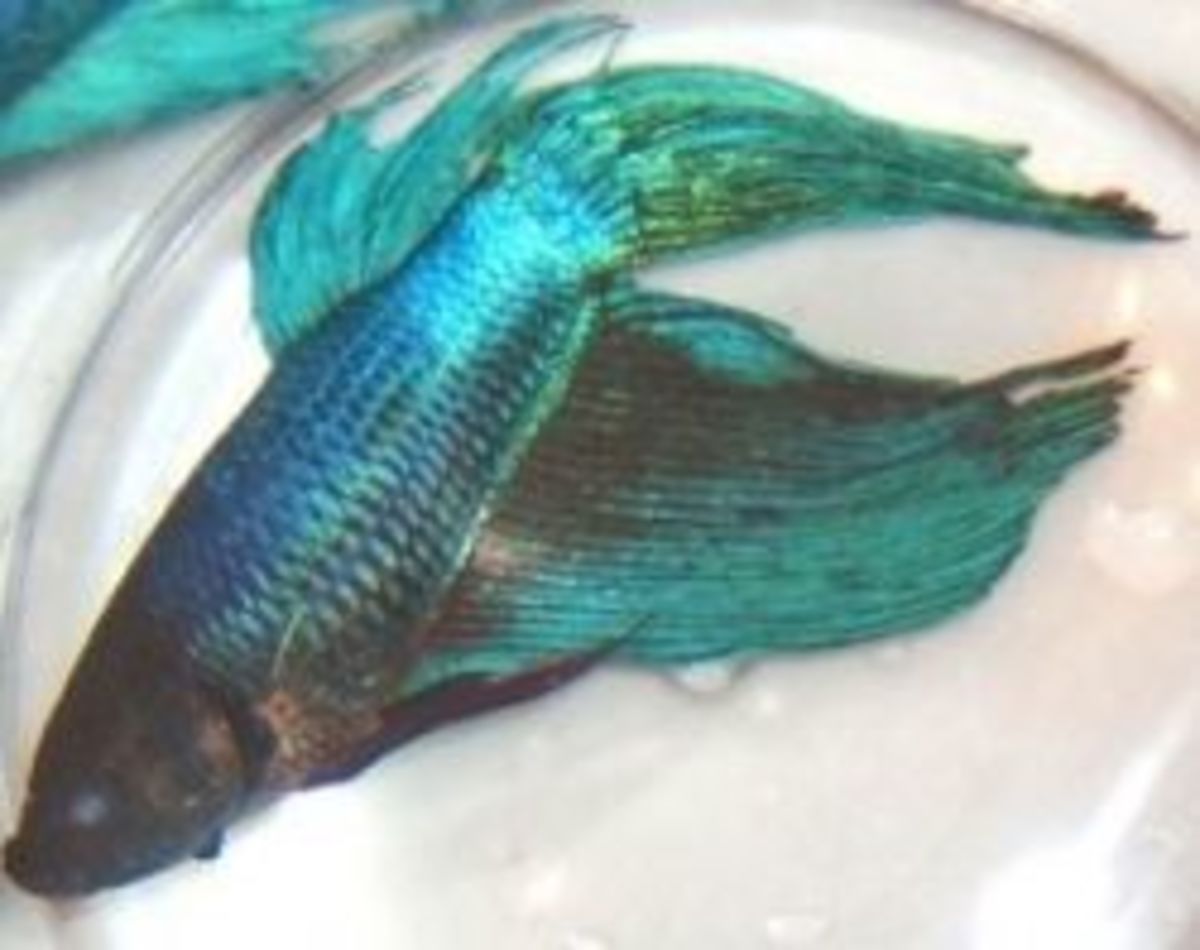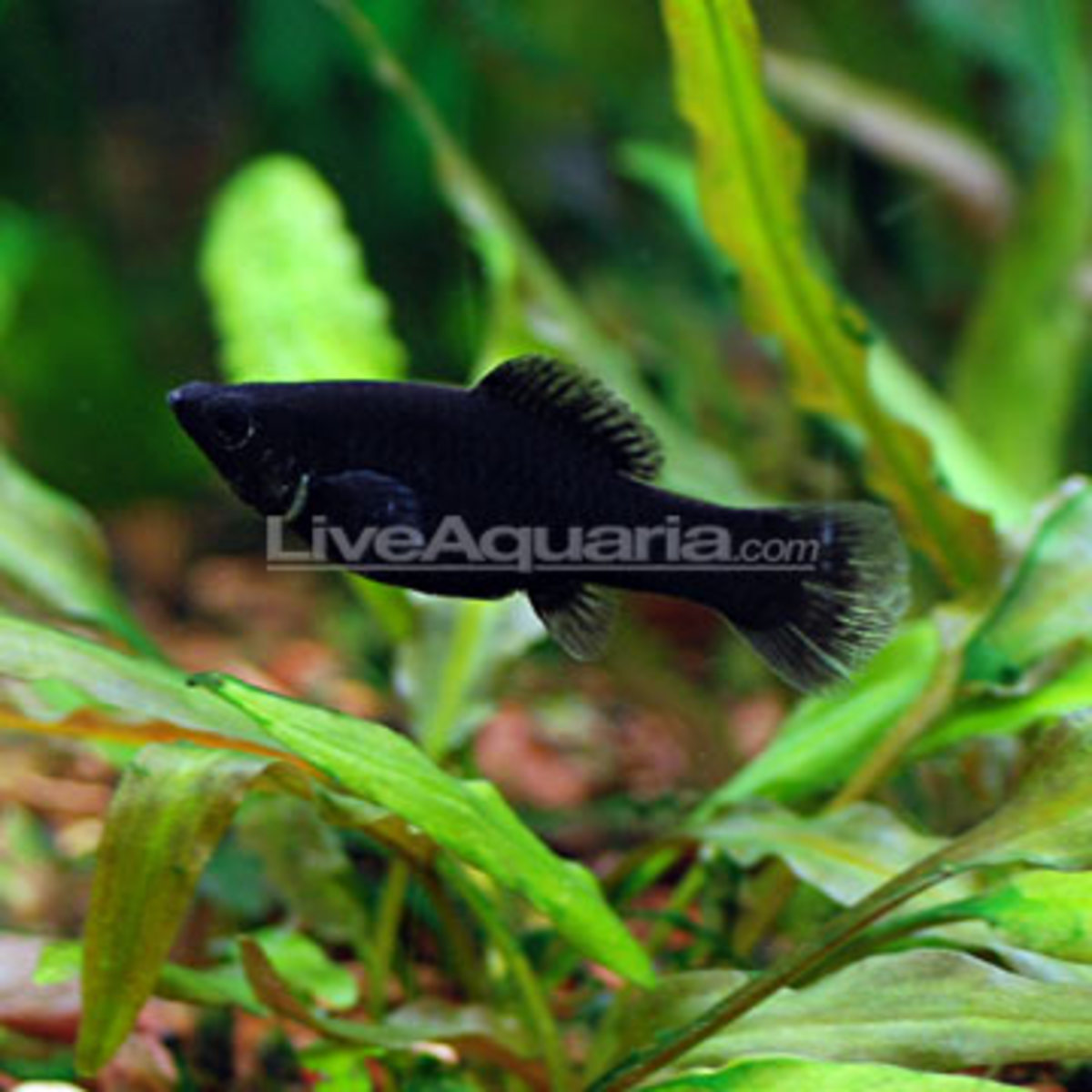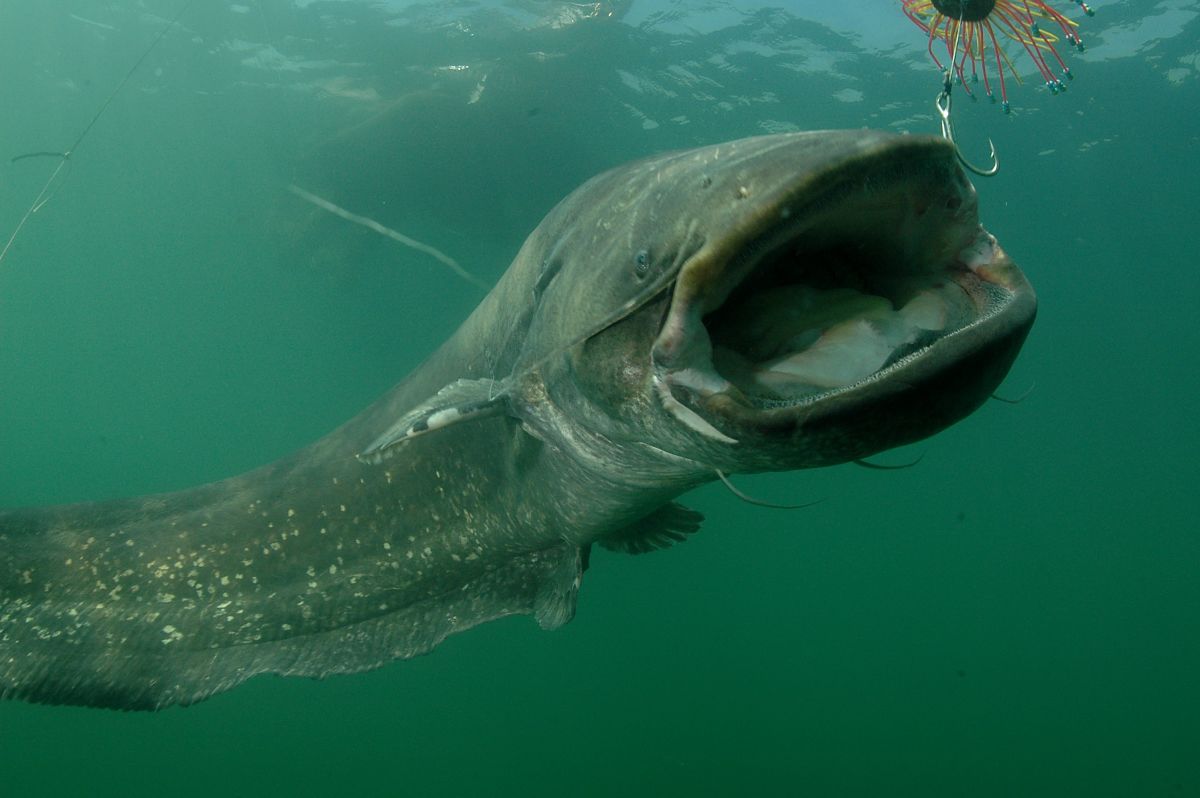- HubPages»
- Pets and Animals»
- Tropical Fish & Aquariums»
- Freshwater Aquarium Animals»
- Labyrinth Fish
Betta Splendens: An Overview of Siamese Fighting Fish and Images of Different Types
Some of the prettiest bettas on the market:
Betta Splendens, or the Siamese Fighting Fish, is one of the most popular fish in the fishkeeping world. This is largely due to misconceptions regarding the betta's needs and housing requirements, as many are led to believe they are no-maintenance pets or decoration. When properly cared for, the betta is an extremely rewarding pet for hobbyists looking for single exhibits or a good community fish. That's right, I said a community fish - the reputation of these fish for aggression is not entirely accurate, as will be discussed later.
Origin:
Bettas originated in Thailand, though their distinctive colors and features do not exist in the wild. These fish can adapt to short periods of time in very small quarters, an adaptation to periods of drought or dry seasons in which the fish had to be able to live in mud puddles or other areas of very little water. However, this is only a short-term ability; wild bettas generally live in vast rice paddies where they have plenty of free swim space.
Types:
Colors of bettas vary widely from the solid colors to marbled, butterfly, dragon and more. While most pet stores sell veiltail bettas, with their flowing spade-shaped tails, these are far from the only ones available. Some of the other types of bettas include:
Crowntails - Good crowntails have at least a 180-degree spread of their tails with a serrated edge. There are several varieties of crowntail, determined by the different types of serrated edge.
Deltas and Super Deltas - These fish have a split, rounded tail fin with smooth edges.
Plakats - Both male and female plakats have short fins, though the fins can vary in type and shape. These are often seen with a rounded smooth or crown tail, but spade-shaped tails are also common.
Halfmoons and Over-Halfmoons - These fish have gorgeous flowing, rounded fins. halfmoons have a 180-degree fin spread, while over-halfmoons are classified by the over-180 spread. A good over-halfmoon will have fins around its entire body, except directly in front of its head, when fully flared. One popular variety of halfmoon is the rosetail, an attractively ruffled tail.
There are other types available on the market, especially through individual breeders, though these are some of the most popular.
Availability:
Veiltails, of the quality generally peddled by fish farms, are widely available in pet stores for around $3-$5 each. These are generally a very poor quality of fish that should not be bred for private sale. Anyone wishing to breed their fish should seek out a quality pair from a reputable breeder, as well as thoroughly research all requirements for keeping the resultant fry healthy.
Many of the other varieties are available through breeders, on online forums, and on auction sites such as http://www.aquabid.com. Most of these varieties start at about $15 for a pet-quality fish and go up from there, sometimes into the hundreds of dollars for top-quality breeders. Often, the best stock can be found from breeders in Singapore, Thailand, and other such countries with a high breeding standard.
Housing:
Contrary to popular belief, these fish can NOT thrive in tiny cups or the ever-popular betta vases. These fish should have no less than a gallon apiece and should have good filtration. In one gallon of water, partial water changes will be required every two or three days. Not only do these fish not require bottled water in their bowls or tanks, it is not recommended. Bottled water has no minerals (unless they have been added or intentionally left in) and is drastically different from the water the fish has been in up to that point. Research proper cycling methods and use de-chlorinated tap water to ensure the fish has the same kind of water it's used to, or as near to the same kind as possible.
Plants are attractive decoration and appreciated by the bettas. Because these fish are air-breathers (they breath off of the surface of the water, as opposed to many other kinds of fish that absorb dissolved oxygen in the water) they appreciate plants near the surface that they can rest on at times. These should be either real or silk plants, the plastic plants commonly sold for aquarium decoration can snag the betta's flowing tail and tear it.
Care and feeding:
Aside from partial water changes, bettas require little beyond regular feeding. These fish are generally fed very small amounts two or three times a day, though some fish can successfully be fed less. Juveniles and fry will need to be fed at LEAST once a day.
Many pet store fish will only eat the betta pellets they've been raised with, though if at all possible your fish should be fed a variety of foods. Though notoriously finicky eaters, bettas almost always learn to accept different kinds of food. A balanced diet of pellets mixed with live food such as moina, micro-worms, bloodworms, grindal worms, or brine shrimp will keep your betta healthy, active, and brilliantly-colored.
Lifespan:
Depending on the feeding and housing conditions, bettas can live for about 3-4 years. Bettas kept in less-than-ideal conditions such as betta vases, small cups, or so-called "betta bowls" are lucky to live an entire year, and most die well before that.
Temperament:
Male bettas are territorial and aggressive with other males of their kind, and occasionally with females of their kind. While it is true that great care should be taken when putting a betta in with any others of its kind, it is equally true that they make excellent community fish.
Female bettas are less territorial, but still have the potential for aggression with other females. Sorority tanks, or all-female betta tanks, are often successful, though care must be taken while they're being set up to make sure that there is no excessive aggression amongst the fish.
Tank mates:
Bettas go well with just about any small, non-aggressive community fish such as platies, guppies, smaller tetras such as neons and cardinals, medium-sized non-aggressive tetras such as ghost tetras, and smaller danios.
Swordtails can sometimes cause problems in a betta tank. Because of their similar size and bright coloring, male bettas sometimes see swordtails as rivals. Nippy fish such as barbs (except cherry barbs), larger danios, and anything else that might try to chew on the betta's fins are not good choices.
Care should be taken if you're mixing bettas with any kind of fry as well as invertebrates such as snails or shrimp, as the betta may pick on these.
Conclusion:
While bettas are one of the hardiest, most attractive fish in the fishkeeping hobby, they are still a living thing. As such, due diligence must be given to research and care to ensure your fish's health and safety. This may seem like a lot of information and it is just the tip of the iceberg in all there is to know about these gorgeous fish, but once learned can lead to some of the most rewarding experiences imaginable.
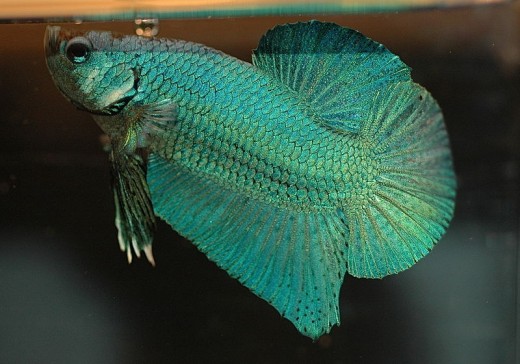
- Hikari Betta Bio-Gold Fish Food -- A Product Review:...
Bettas are one of the most popular fish in America...and, sadly, one of the most abused fish in America. While it is true that bettas can live in itty-bitty cups it's equally true that they will not...


